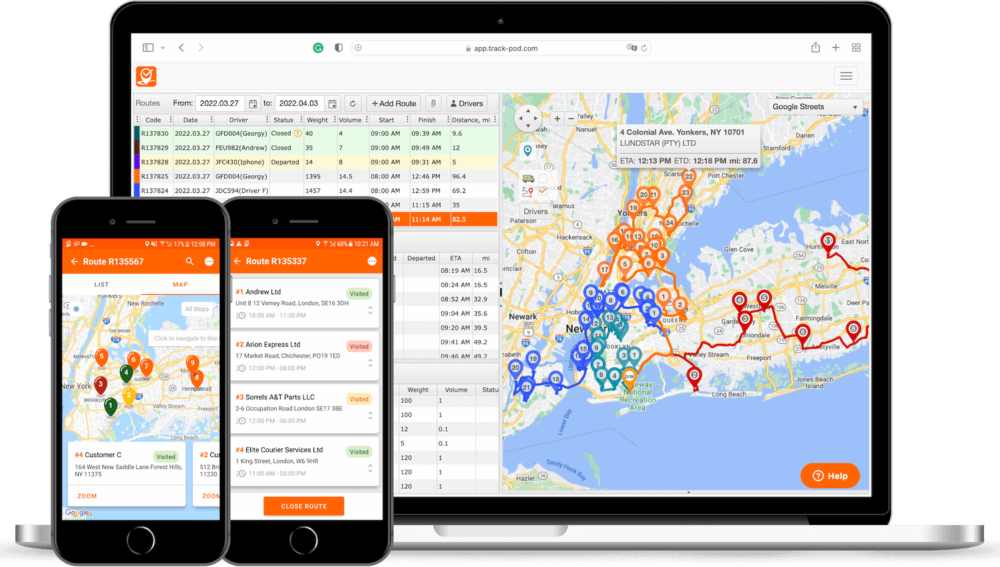In the fast-paced world of business, efficiency is the key to success. This is particularly true when it comes to logistics, the backbone of any operation that deals with the movement of goods or services. Logistics is a complex, multifaceted process that involves everything from inventory management to transportation and order fulfillment. When these processes are not streamlined, businesses can face a host of challenges, including delays, inaccuracies, and inefficiencies that can impact the bottom line. This is where software solutions come into play, offering a way to automate and optimize logistics operations for maximum efficiency.
Definition of Business Logistics

Source: globitexworld.com
At its core, business logistics is the process of planning, implementing, and controlling the efficient and effective flow and storage of goods, services, and related information from the point of origin to the point of consumption. It’s a critical component of supply chain management, encompassing a range of activities including transportation, inventory management, warehousing, and order fulfillment. In essence, logistics ensures that the right product reaches the right place at the right time, in the most cost-effective manner.
Key Challenges in Logistics Management
Despite its importance, managing logistics can be a daunting task. Businesses often grapple with challenges such as inventory inaccuracies, transportation delays, and inefficient order processing. For instance, without accurate inventory data, businesses risk overstocking or understocking, both of which can lead to lost sales and wasted resources. Transportation delays, on the other hand, can disrupt the entire supply chain, leading to missed deadlines and dissatisfied customers. Additionally, manual order processing can be time-consuming and prone to errors, further hampering efficiency.
Role of Software Solutions in Logistics
This is where software solutions come into the picture. By automating and streamlining logistics operations, these tools can help businesses overcome the aforementioned challenges. Logistics Software offers a range of benefits, including improved visibility into logistics processes, enhanced decision-making capabilities, and increased operational efficiency. For instance, logistics management software can automate tasks such as order processing and inventory tracking, reducing the likelihood of errors and freeing up staff to focus on more strategic tasks.
Warehouse Management Software
One such tool is warehouse management software. This software helps businesses optimize their warehouse operations by automating tasks such as inventory control, space utilization, and order fulfillment. For instance, it can track inventory levels in real-time, helping businesses avoid overstocking or understocking. It can also optimize space utilization by suggesting the most efficient placement of goods within the warehouse. Additionally, it can streamline order fulfillment by automating picking, packing, and shipping processes.
Transportation Management Software

Source: track-pod.com
Transportation management software is another crucial tool for logistics efficiency. It helps businesses optimize their transportation operations by automating tasks such as route planning, carrier selection, and shipment tracking. For instance, it can suggest the most efficient routes for delivery, helping businesses save on fuel costs and reduce delivery times. It can also help businesses select the most cost-effective carriers based on factors such as price, delivery time, and reliability. Additionally, it provides real-time tracking of shipments, giving businesses and their customers visibility into the delivery process.
Inventory Management Software
Inventory management software is a key tool for maintaining accurate inventory levels. It automates tasks such as inventory tracking, demand forecasting, and replenishment. For instance, it can track inventory levels in real-time, alerting businesses when stock levels are low and need to be replenished. It can also forecast demand based on historical sales data, helping businesses plan their inventory purchases accordingly. Additionally, it can automate the replenishment process, ensuring that stock levels are always optimal in order to make procurement easier.
Order Management Software
Order management software is crucial for streamlining order processing and fulfillment. It automates tasks such as order entry, processing, and tracking, reducing the likelihood of errors and speeding up the fulfillment cycle. For instance, it can automatically process orders as they come in, eliminating the need for manual entry. It can also track orders in real-time, giving businesses and their customers visibility into the fulfillment process. Additionally, it can integrate with other systems such as inventory and shipping, ensuring that orders are fulfilled accurately and efficiently.
Supply Chain Visibility Solutions
Supply chain visibility solutions are essential for gaining real-time insights into the movement of goods and materials. They provide a holistic view of the supply chain, improving coordination among suppliers, manufacturers, and customers. For instance, they can track the movement of goods from the supplier to the manufacturer to the customer, providing real-time updates on the status of shipments. They can also provide insights into potential disruptions in the supply chain, allowing businesses to take proactive measures to mitigate them.
Embracing Sustainability in Logistics Through Software
In addition to efficiency, sustainability in logistics is becoming increasingly vital. 3pl warehouse software solutions play a pivotal role in this area by enabling eco-friendly practices. These tools can optimize routes for lower emissions, manage returns efficiently to reduce waste, and support sustainable inventory practices. For instance, route optimization software not only saves costs but also minimizes the carbon footprint of transportation. Similarly, inventory management systems help in reducing overproduction and excess stock, which are key factors in sustainable resource utilization. By integrating these sustainable practices, businesses not only contribute to environmental conservation but also meet the growing consumer demand for eco-responsibility.
Integration and Connectivity
Integration and connectivity are key to maximizing the benefits of these software solutions. By integrating these tools with existing business systems and platforms, businesses can ensure seamless data exchange, automation, and collaboration across departments and stakeholders. For instance, integrating inventory management software with an e-commerce platform can automate the process of updating inventory levels on the website, reducing the likelihood of stockouts or overstocking.
Data Analytics and Reporting

Source: finereport.com
Data analytics and reporting capabilities are another major benefit of these software solutions. They provide valuable insights into logistics operations, helping businesses identify inefficiencies and make data-driven decisions. For instance, they can provide reports on inventory turnover, order fulfillment times, and transportation costs, helping businesses identify areas for improvement. They can also provide predictive analytics, helping businesses forecast future demand and plan their logistics operations accordingly.
Case Studies and Success Stories
There are numerous success stories of businesses that have leveraged these software solutions to streamline their logistics. For instance, a leading e-commerce company was able to reduce its order fulfillment times by 50% by implementing a warehouse management system. Similarly, a global manufacturing company was able to reduce its transportation costs by 20% by using a transportation management system. These examples highlight the transformative potential of these software solutions.
Conclusion
Software solutions offer a powerful way for businesses to streamline their logistics operations. By automating and optimizing processes, these tools can help businesses overcome common logistics challenges, improve operational efficiency, and gain a competitive edge. As the business landscape continues to evolve, embracing these technologies will be key to staying ahead of the curve.


















